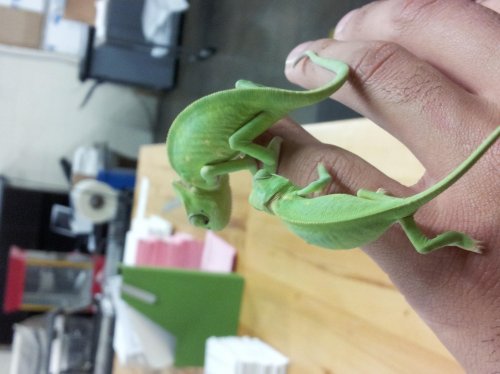fluxlizard
Avid Member
Can lizards even reproduce through arrhenotokous parthenogenesis? (I think I spelled that right?)
If they cannot, and there are males present in the clutch, we can throw out parthenogenesis.
Uh- yes- that is what I was talking about earlier and why I brought it up. I rarely pull stuff up out of pure imagination.
There are some species that are entirely parthenogenic- some geckos, whiptails and some butterfly agama species for examples. All females like you mention.
Some species parthenogenic reproduction sometimes occurs and other times it is normal reproduction. And in at least some cases parthenogenic reproduction occurred in captivity after females were mounted by other known females.
But it gets more interesting, the female thing doesn't hold true for all species of lizard so far- Komodo dragons hatched out all males when this occurred.
It's occurred in other species as well (nile monitor, and I've seen reports here and there of others over the years but can't remember what they were- I want to say one was a water dragon but I can't remember for sure.
Here are a few links to get you started-
Because of the genetics of this process, he added, her children would always be male.
This is because Komodo dragons have W and Z chromosomes - females have one W and one Z, males have two Zs.
The egg from the female carries one chromosome, either a W or Z, and when parthenogenesis takes place, either the W or Z is duplicated.
This leads to eggs which are WW and ZZ. WW eggs are not viable, but ZZ eggs are, and lead to male baby Komodo dragons.
http://news.bbc.co.uk/2/hi/6196225.stm?lsm
http://www.thefreelibrary.com/Virgin+scary%3b+EXPERTS+AMAZED+AS+LIZARD+HAS+AN+IMMACULATE+BIRTH.-a0202732081
Up to 30 percent of unfertilized turkey eggs can spontaneously begin to develop. In one study, selective breeding boosted the rate above 40 percent.
http://www.slate.com/articles/health_and_science/human_nature/2007/06/brave_old_world.html
Last edited:








